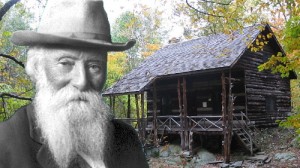Second Nature
On April 3, 1837, writer/naturalist, John Burroughs was born. In his early adult years, he alternated teaching with studying at different institutions or colleges. The works of Wordsworth and Emerson inspired him to write from his personal vantage point – a man raised and steeped in nature, sharing his own observations and perceptions. Burroughs pioneered an American style of nature essay writing that contributed to the evolution of the U.S. conservation movement.
For more than 50 years, he wrote and published on topics that celebrated the environment, its idyllic beauty and value, and brought it to the attention and interest of an international readership. Although his writing fills 23 volumes that deal primarily with aspects of the natural world, they also include poetry critique and travel essays.
In his Hudson River valley home, like minds visited and conferred – John Muir, Theodore Roosevelt, Walt Whitman, Henry Ford and Thomas Edison. Prompted by Burroughs’ book, Wake-Robin, an invitation to study birds, astronomer Mary Watson Whitney formed a “Wake Robin” club and brought her students from Vassar to visit Burroughs’ digs at “Slabsides” for Sunday morning bird walks.

Burroughs’ name is honoured in schools, parks, a mountain, and a sanctuary from California to New York. Each year since 1926, the John Burroughs Association has awarded a medal in his name to the author of a distinguished book of natural history.
B Bondar / Real World Content Advantage